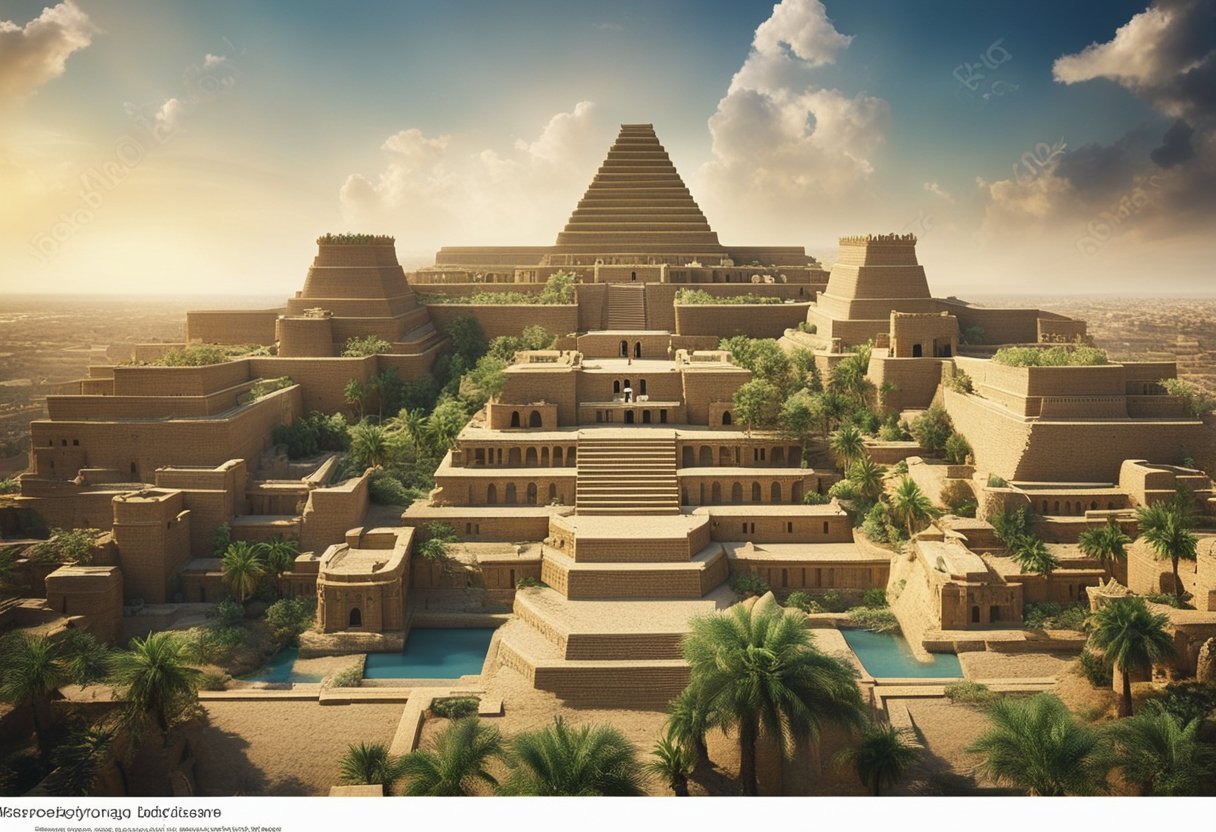The lost ancient city of Babylon intrigues historians and casual enthusiasts alike. Located on the banks of the Euphrates River in modern-day Iraq, Babylon was more than just a city; it was a cultural and political powerhouse that influenced much of ancient Mesopotamia. The city’s most famed ruler, Hammurabi, established one of the earliest codified legal systems, leaving an indelible mark on human civilization.
Babylon was also celebrated for its monumental architecture and mythical wonders. The Hanging Gardens of Babylon, one of the Seven Wonders of the Ancient World, captivated imaginations even in antiquity. This architectural marvel showcased Babylon’s remarkable advancements in engineering and design.
Throughout its history, Babylon saw a succession of rulers and empires. From its origins around 2300 B.C. to its control under the Kassites and later the Neo-Babylonian Empire, the city witnessed significant political and cultural transformations. Its legacy continues to be a topic of extensive study and fascination today.
Unveiling Babylon

Babylon, an ancient city located in present-day Iraq, has fascinated historians and archaeologists alike. This city’s rich history and significant contributions to culture and religion make it a topic of great interest.
Location and Discovery
Babylon was situated on the lower Euphrates River in southern Mesopotamia, roughly 85 kilometers south of present-day Baghdad. The ruins lie near the modern-day city of Hillah, Iraq. This prime location made it a central hub in ancient times, accessible by both land and water routes.
The city’s discovery and subsequent excavations have revealed much about its grandeur. Early explorers and archaeologists in the 19th century brought Babylon into the limelight by unearthing its massive walls, gates, and the famous Ishtar Gate. These findings have given us invaluable insights into the city’s layout, architecture, and daily life. For more on the location and initial discovery, see this detailed account here.
Historical Significance
Babylon’s historical importance cannot be overstated. It served as the main cultural and political center of the Akkadian-speaking region of Babylonia. The city saw the rise of the Old Babylonian Empire in the 19th-16th centuries BC, and later the Neo-Babylonian Empire in the 7th-6th centuries BC.
The city’s periods of dominance were marked by significant achievements in law, literature, and architecture. The Code of Hammurabi, one of the earliest and most complete written legal codes, originated here. Babylon was also known for the Hanging Gardens, one of the Seven Wonders of the Ancient World, and the towering ziggurat often associated with the biblical Tower of Babel. More insights on Babylon’s historical role can be found here.

Cultural and Architectural Marvels
Babylon, an ancient city, is renowned for its impressive structures and cultural contributions. Its architectural wonders, artistic achievements, and scholarly advancements have fascinated historians and archaeologists for centuries.
The Hanging Gardens
One of the most renowned features of Babylon was the Hanging Gardens. These gardens were considered one of the Seven Wonders of the Ancient World. Built by Nebuchadnezzar II, they were said to be an extraordinary feat of engineering, designed to comfort his homesick wife, Amytis of Media, who missed the green hills of her homeland.
The gardens supposedly featured large terraces filled with a variety of trees and plants. Despite their fame, the exact location of these gardens remains undetermined, with some even questioning their existence. The fascination with their lush beauty and the mystery surrounding them endures today.
Notable Structures and Features
The city of Babylon was home to several impressive structures. The Ishtar Gate, a massive entrance adorned with vibrant blue bricks and intricate animal figures, is one of the most iconic. This gate exemplified the grandeur of Babylonian architecture and led to the inner city.
Another significant construction was the Etemenanki, a towering ziggurat believed to inspire the biblical story of the Tower of Babel. It served as a religious center and a demonstration of Babylon’s architectural ingenuity. The city’s defensive walls, said to be thick and impenetrable, safeguarded its grandeur from invaders.
Art and Scholarly Contributions
Babylon was also a hub of cultural and intellectual activity. Its residents made significant advancements in mathematics, astronomy, and literature. They developed extensive cuneiform tablets that have provided modern scholars with insights into their sophisticated society.
Artists in Babylon created intricate reliefs, sculptures, and pottery. The city’s scribes compiled texts that include legal codes, scientific treatises, and epic tales such as the “Epic of Gilgamesh.”
By blending artistic expression with scholarly pursuit, Babylon left a lasting legacy that influenced both contemporary cultures and future civilizations. Its combination of formidable architecture and intellectual accomplishments continues to captivate those who study it.

